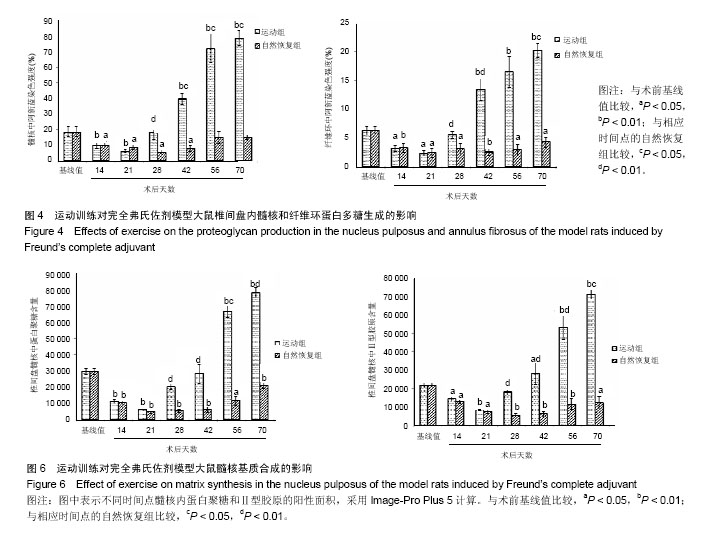| [1] Vos T, Flaxman AD, Naghavi M, et al. Years lived with disability (YLDs) for 1160 sequelae of 289 diseases and injuries 1990-2010: a systematic analysis for the Global Burden of Disease Study 2010. Lancet. 2012;380(9859):2163-2196.[2] Balague F, Mannion AF, Pellise F, et al. Non-specific low back pain. Lancet. 2012;379(9814):482-491.[3] Hughes SP, Freemont AJ, Hukins DW, et al. The pathogenesis of degeneration of the intervertebral disc and emerging therapies in the management of back pain. J Bone Joint Surg Br. 2012;94(10):1298-1304.[4] Cho H, Seth A, Warmbold J, et al. Aging affects response to cyclic tensile stretch: paradigm for intervertebral disc degeneration. Eur Cell Mater. 2011;22:137-145, 145-146.[5] Wang D, Nasto LA, Roughley P, et al. Spine degeneration in a murine model of chronic human tobacco smokers. Osteoarthritis Cartilage. 2012;20(8):896-905.[6] Muthukrishnan R, Shenoy SD, Jaspal SS, et al. The differential effects of core stabilization exercise regime and conventional physiotherapy regime on postural control parameters during perturbation in patients with movement and control impairment chronic low back pain. Sports Med Arthrosc Rehabil Ther Technol. 2010;2:13.[7] Karppinen J, Shen FH, Luk KD, et al. Management of degenerative disk disease and chronic low back pain. Orthop Clin North Am. 2011;42(4):513-528.[8] Raj PP. Intervertebral disc: anatomy-physiology- pathophysiology-treatment. Pain Pract. 2008;8(1):18-44.[9] Smith LJ, Nerurkar NL, Choi KS, et al. Degeneration and regeneration of the intervertebral disc: lessons from development. Dis Model Mech. 2011;4(1):31-41.[10] Brisby H, Wei AQ, Molloy T, et al. The effect of running exercise on intervertebral disc extracellular matrix production in a rat model. Spine (Phila Pa 1976). 2010;35(15):1429-1436.[11] Sasaki N, Henriksson HB, Runesson E, et al. Physical exercise affects cell proliferation in lumbar intervertebral disc regions in rats. Spine (Phila Pa 1976). 2012;37(17):1440-1447.[12] Luan S, Wan Q, Luo H, et al. Running exercise alleviates pain and promotes cell proliferation in a rat model of intervertebral disc degeneration. Int J Mol Sci. 2015;16(1):2130-2144.[13] Lee M, Kim B, Lim EJ, et al. Complete Freund??s adjuvant- induced intervertebral discitis as an animal model for discogenic low back pain. Anesthesia Analgesia. 2009;109(4):1287-1296.[14] Luo J, Hu X, Zhang L, et al. Physical exercise regulates neural stem cells proliferation and migration via SDF-1alpha/CXCR4 pathway in rats after ischemic stroke. Neurosci Lett. 2014;578:203-208.[15] Zhang L, Hu X, Luo J, et al. Physical exercise improves functional recovery through mitigation of autophagy, attenuation of apoptosis and enhancement of neurogenesis after MCAO in rats. BMC Neurosci. 2013;14:46.[16] Zheng H, Zhang L, Luo J, et al. Physical Exercise Promotes Recovery of Neurological Function after Ischemic Stroke in Rats. Int J Mol Sci. 2014;15(6):10974-10988.[17] Kim JS, Kroin JS, Li X, et al. The rat intervertebral disk degeneration pain model: relationships between biological and structural alterations and pain. Arthritis Res Ther. 2011;13(5):R165.[18] Olmarker K. Puncture of a lumbar intervertebral disc induces changes in spontaneous pain behavior: an experimental study in rats. Spine (Phila Pa 1976). 2008 ;33(8):850-855.[19] Lai A, Moon A, Purmessur D, et al. Assessment of functional and behavioral changes sensitive to painful disc degeneration. J Orthop Res. 2015;33(5):755-764.[20] Quintarelli G, Scott JE, Dellovo MC. The chemical and histochemical properties of Alcian Blue. Ⅱ. Dye binding of tissue polyanions. Histochemie. 1964;4(2):86-98.[21] Matkowskyj KA, Schonfeld D, Benya RV. Quantitative immunohistochemistry by measuring cumulative signal strength using commercially available software photoshop and matlab. J Histochem Cytochem. 2000;48(2):303-312.[22] Panjabi MM. The stabilizing system of the spine. Part I. Function, dysfunction, adaptation, and enhancement. J Spinal Disord. 1992;5(4):383-389, 397.[23] Kamaz M, Kiresi D, Oguz H, et al. CT measurement of trunk muscle areas in patients with chronic low back pain. Diagn Interv Radiol. 2007;13(3):144-148.[24] Wan Q, Lin C, Li X, et al. MRI assessment of paraspinal muscles in patients with acute and chronic unilateral low back pain. Br J Radiol. 2015;88(1053):20140546.[25] Hayes AJ, Isaacs MD, Hughes C, et al. Collagen fibrillogenesis in the development of the annulus fibrosus of the intervertebral disc. Eur Cell Mater. 2011;22:226-241.[26] Cortes DH, Elliott DM. Extra-fibrillar matrix mechanics of annulus fibrosus in tension and compression. Biomech Model Mechanobiol. 2012;11(6):781-790.[27] Roughley PJ. Biology of intervertebral disc aging and degeneration: involvement of the extracellular matrix. Spine (Phila Pa 1976). 2004;29(23):2691-2699.[28] Henriksson H, Thornemo M, Karlsson C, et al. Identification of cell proliferation zones, progenitor cells and a potential stem cell niche in the intervertebral disc region: a study in four species. Spine (Phila Pa 1976). 2009;34(21):2278-2287.[29] Henriksson HB, Svala E, Skioldebrand E, et al. Support of concept that migrating progenitor cells from stem cell niches contribute to normal regeneration of the adult mammal intervertebral disc: a descriptive study in the New Zealand white rabbit. Spine (Phila Pa 1976). 2012;37(9):722-732.[30] Gawri R, Moir J, Ouellet J, et al. Physiological loading can restore the proteoglycan content in a model of early IVD degeneration. PLOS One. 2014;9(7):e101233.[31] Wang YT, Wu XT, Wang F. Regeneration potential and mechanism of bone marrow mesenchymal stem cell transplantation for treating intervertebral disc degeneration. J Orthop Sci. 2010;15(6):707-719. |
.jpg)


.jpg)